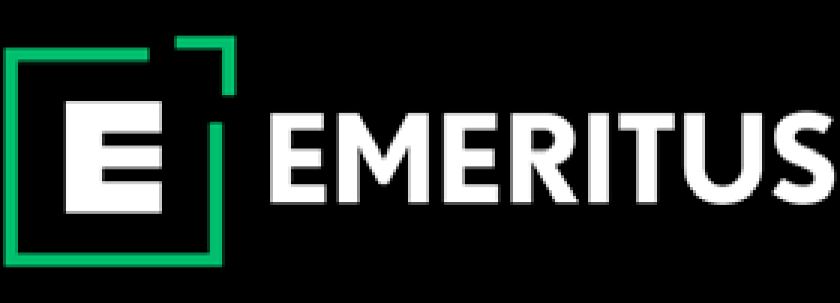The Ultimate Guide To Designing Products That Users Will Love

The market is flooded with countless products. We notice some, and then some slip right by us. We use them regularly but fail to realize the intelligence behind them all: effective product design. Take a straw, for instance.
Imagine either bending over whenever you wanted a sip or tilting the glass to make the straw reach your mouth. Now imagine the solution: A bendy straw, a straw that bends at the neck so that yours doesn’t have to. When you are sipping your drink, the glass can stay where it is, and so can you.
Slipped right by you. The simplest of product design is often the most effective. In today’s industrial climate, users are spoilt for choice. Humans have never innovated faster. As a result, all products are trying to do more and cost less. For product managers, it means that they need to make products that are relevant, adaptive, simple to use, yet effective in solving user pain points.
Effective Product Design
As product teams, we typically take the persona of the user(s) for whom we’re solving a problem and work backward to solve their core problems. However, as product teams, we tend not to understand the persona deeply enough. We often end up building products and features that typically don’t solve the entirety of the problem but just a part. So what happens next? We iterate by speaking to more customers → understanding their requirements, → shipping changes.
But wait, isn’t that what we’re supposed to do in a modern technology company, isn’t that what being customer-centric means? You can argue that but here’s the mistake we make by taking the persona approach to solving problems. We, more often than not, generalize the issues in the persona. Confused? Let me explain.
Take this persona, for example, “White Male, 70+ years older living in a castle in the United Kingdom,” now if you look at it carefully, one might think that it’s a reasonably narrow persona; there aren’t many who can fit this; and that is true but if one takes a second look and identifies users in this group one gets a wide spectrum of user need and problem. Look at it this way on one end, the user persona is King Charles, and on the other end of the spectrum, it is Ozzy Osborne, a famous heavy metal and hard rock singer-songwriter. Getting it now?
Understanding the Target User
There is no way Ozzy and King Charles can be generalized into the same group since the problems and solutions are vastly different. We, as product teams, make mistakes in building a generalized solution for both. If we do, we’ll end up in the same cycle I’ve described above of speak → understand → ship, and hence going a level deeper would not only save us costs and time engineering-wise but also becomes a proxy for the organization to get to know the user and user needs deeply.
We call this aspect “empathetic” product design, which is critical to creation. Over the years, companies and product teams have evolved to keep empathy at the center of their product development process. Yet, few incorporate real empathy or design thinking in their process. Design thinking became popular in the 2010s, and product teams have spent offsites, training, and education budgets to make it front and center of the product development process.
Define the Core Problem Well
Effective product design thinking begins with defining the problem rather than thinking about the user personas; otherwise, we get into the Ozzy and King Charles conundrum. It all goes back to the basics; articulation of the problem accurately can solve all the issues that may tend to exist in the organization. Defining problems requires product teams to abstract away all prior context known about the problem and focus on articulating to avoid any biases.
While articulating the problem statement, it’s fundamental to answer the W’s:
- What is the problem?
- Who is experiencing the problem?
- Where is it occurring?
- Why is it occurring?
By writing the problem in such a manner, every product team now has a clearer focus on the problem rather than the solution set. Every product manager needs to ensure that articulation of the problems in the product or company is communicated further. This format is easy to take across the organization at the leadership level and cross-functionally. Such a format not only helps make the user(s) a part of the problem but also is much more effective in killing the process of being bogged down to solve every issue asked by the customers hence avoiding the thirst trap of iterating.
Rather it helps us go deep, follow the real craft and do right by the users. Additionally, it helps simplify complex problems for organizations, effectively leading to better outcomes and decisions; essentially, you design something your users will love.
 Ideate a Solution
Ideate a Solution
Now that the product team understands who the users are and their problems, they should move on to creating product hypotheses. Developing solutions and testing if they are based on valid assumptions is important. The product team should come up with 2-3 viable product solutions. The winner should be decided by conducting effective research to determine which solution the user finds the easiest and most effective. There are a variety of ways to validate the product or feature design, including:
User journey mapping: A user journey map, often called a customer journey map, is a chart that graphically depicts the user flow from discovery to engagement.
Building use cases: A use case describes how users interact with your products and perform tasks on or with your product. It outlines
- What pain points are the user solving through your product
- How are the users going to interact with your product
- When are the users going to use your product
A popular framework for building products that are going to be effective is the ‘Working Backwards Framework.’ Successful leaders like Jeff Bezos have shared their experience of using this framework; according to codecamp,
“Amazon Founder Jeff Bezos once noted that while he can’t predict the future, he can’t imagine a future where people want slower delivery or higher priced items. By working backward from users’ fundamental needs and goals, he can build solutions, technology, and products that empower these people.”
Build an Early Prototype
Once you have decided on the product or feature, you will go forward with; you should not jump to mass-producing it or rolling it out. Good product managers should know that even after getting confirmation that the users will engage with the product, they should build prototypes to hone their understanding of user needs further and verify that what they have built is what the customers want. You can do this by either building an exact model of your product or by building a Minimum Viable Product (MVP) or Minimum Lovable Product (MLP). The difference is that the MVP is a stripped-down version of the product. It is a no-frills functional product. All major products like Facebook, Twitter, and Amazon began with an MVP. According to Bplan,
‘Amazon, as an MVP, was limited to a single book category. Although the team had ambitions to build an online store that could sell anything, they consciously limited themselves to a simple field. Selling books allowed them to test the concept of a low-stake industry, with products that can be easily stored, shipped, and bought.’
The MLV is a product that the users are delighted with from the get-go. The MLV and the MVP can be rolled out into the market or run as beta versions to understand how users interact with the product. It will help you determine if your product engages the users. Is it effective enough to get the users hooked, and most importantly, do the users love your product? There are a host of tests that you can perform to seek answers to the above-mentioned questions. They fall under all categories, from behavioral to attitudinal and qualitative to quantitative.
Test the Solution on Focus Groups
If you pay attention, you will notice that you have not yet arrived at your final offering. Creating and testing prototypes with a small audience will give you abundant data. It would be best to derive meaningful insights from the data to finalize your final product and features. Your final product should fulfill your customer needs, work as intended, and work whenever intended. According to the product plan, a product too must fulfill the basic needs of consumers.
As you build a new product, whether it be products or features, ask the following questions at each level:
Functionality – Is it effective?
Reliability – Will it operate when I require it to?
Usability – Can I understand how to make it work?
Proficiency – Can it demonstrate to me how to make it work better?
Creativity – How else can I make this work for me?
Here, it’s important to pose these queries to designers and clients and pay close attention to their responses.
Kickstart Your Product Design Career
You must also realize that any single product or feature is not set in stone, well, not entirely. As good product managers, you must realize that a product should be adaptive, as should you. There are two main reasons: If the product fails to strike a chord with the users, the product team should take rectifying measures. The second, and probably crucial, is a product’s competition. A product should always have a differentiating factor that sets it apart in the users’ minds.
There is no fixed recipe for creating a product that the users will instantly fall in love with. However, there are steps and procedures that you can, or should I say, you must follow to ensure that what you are building is in line with what the users desire. Explore Emeritus programs today if you are looking for the best product design and management courses.










